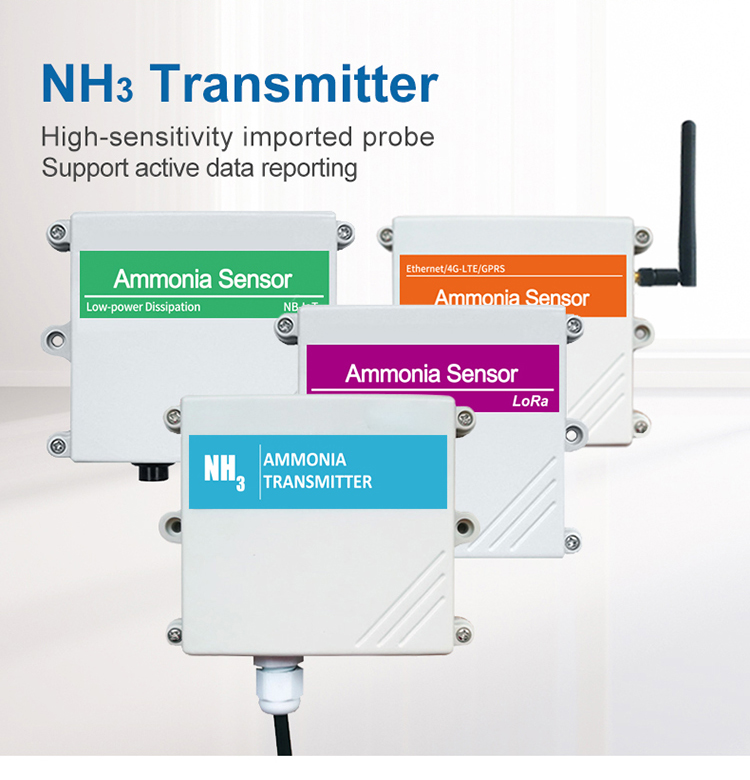An ammonia sensor is a critical device used to detect and measure the concentration of ammonia gas in various environments. It plays a vital role in ensuring the safety of individuals and protecting the environment by actively monitoring ammonia levels and providing early warnings in the presence of this toxic gas. This article explores the functionality and significance of ammonia sensors, highlighting their importance in preventing health hazards and environmental pollution caused by ammonia gas.

Functionality and Design
An ammonia sensor operates by utilizing advanced technology to detect and quantify ammonia gas in the air. It consists of a specific sensor that responds to the presence of ammonia molecules and generates an electrical signal proportional to the gas concentration. This signal is then processed by the sensor’s electronics to display the ammonia levels in real time.
Ammonia sensors come in various designs and configurations, ranging from handheld portable units to fixed detectors for continuous monitoring in industrial settings. Some sensors are designed to be integrated into larger monitoring systems, allowing centralized control and remote access to the ammonia readings.
Applications in Industrial Settings
The primary application of ammonia sensor is in industrial settings where ammonia is commonly used, such as manufacturing plants, refrigeration facilities, and agricultural farms. Ammonia is widely used as a refrigerant in cold storage warehouses and food processing industries. However, it poses significant health risks when released into the air, including respiratory problems and eye irritation.

By continuously monitoring the ammonia levels, sensors provide an early warning system in case of leaks, enabling prompt action to prevent health hazards. Industrial facilities often integrate sensors with alarm systems and ventilation controls, enabling automatic shutdown and evacuation procedures in the event of high ammonia concentrations.
Impact on Environmental Safety
Ammonia sensors also play a crucial role in environmental safety by detecting and preventing ammonia emissions that can harm ecosystems. Ammonia gas is a major component of agricultural fertilizers and is commonly used in livestock farming. If ammonia is released into the environment in high concentrations, it can lead to soil and water pollution, resulting in harmful effects on plants, animals, and aquatic life.
By monitoring the ammonia levels in agricultural areas, sensors help farmers and regulatory agencies to mitigate ammonia emissions and implement appropriate measures. This includes optimizing fertilizer application, adjusting livestock management practices, and implementing wastewater treatment systems to reduce ammonia release and protect the environment.
Integration with Safety Systems
To enhance safety measures, ammonia sensors are often integrated with safety systems and automation controls. They can be connected to centralized monitoring systems, allowing supervisors to receive real-time notifications and data about ammonia concentrations. This integration enables timely response mechanisms, such as activating ventilation systems, closing off affected areas, or triggering alarms for evacuation.
Additionally, some advanced ammonia sensors are equipped with data logging capabilities, enabling the collection and analysis of historical data. This feature allows operators to identify trends, monitor long-term ammonia levels, and make informed decisions regarding safety protocols and preventive measures.
Conclusion
Ammonia sensors are essential devices that safeguard health and the environment against the dangers of ammonia gas. With their ability to detect and measure ammonia concentrations in real time, these sensors provide early warnings, enabling prompt actions to protect individuals from exposure and prevent environmental pollution. By integrating with safety systems and automation controls, ammonia sensors ensure a swift response to ammonia-related incidents, minimizing risks and ensuring a safer working environment. Embracing the use of ammonia sensors is crucial for industries and agricultural sectors to uphold health and environmental safety standards while efficiently utilizing ammonia resources.